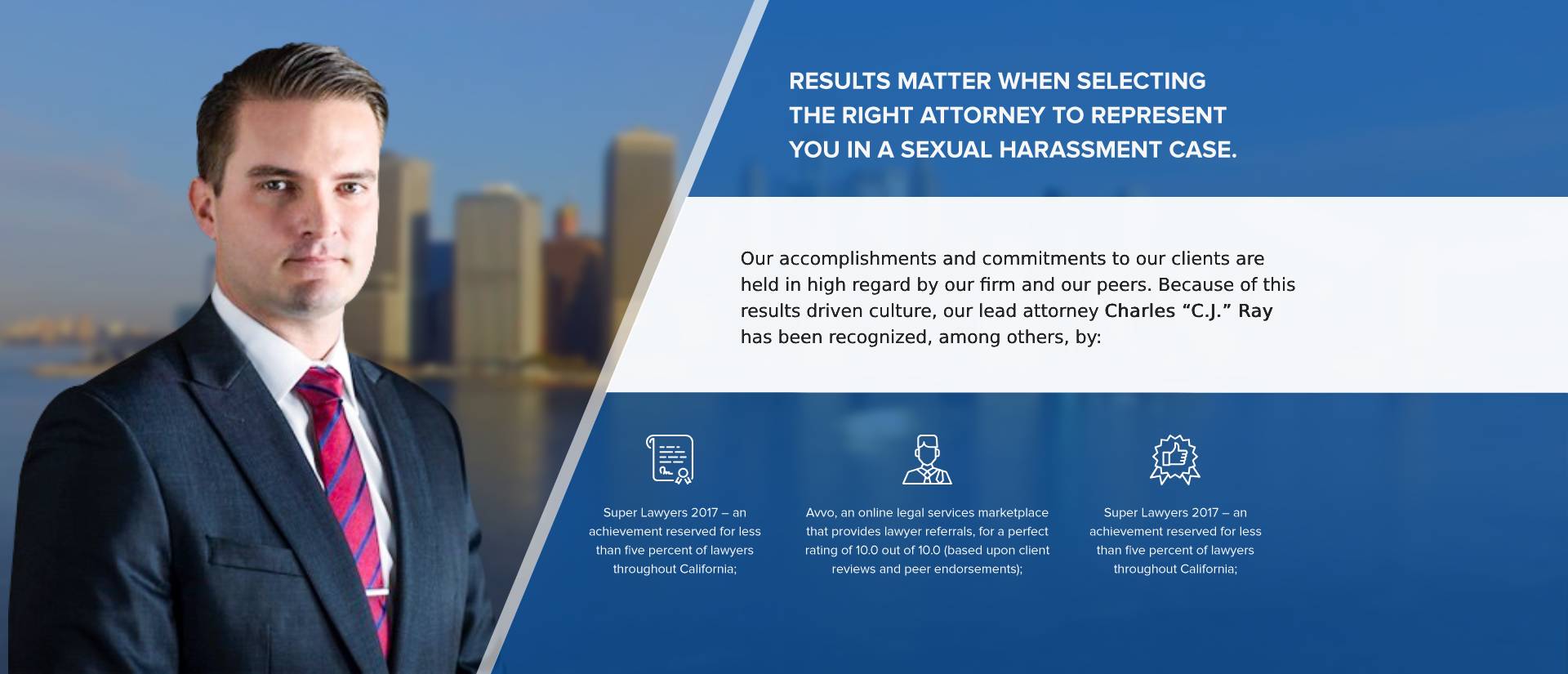Workplace sexual harassment can be traumatizing and can affect you personally and professionally, leaving you feeling embarrassed, powerless, and uncertain about where to turn. Understanding ways to protect yourself and taking appropriate action can help you deal with the situation while safeguarding your profession and well-being. If you experience sexual harassment at work, report it to the human resource personnel or the management, depending on your company’s policy. You can also document the incidents and seek emotional support. Knowing your legal rights is also important, especially if your employer fails to act. If you or your loved one faces sexual harassment, you should contact an experienced sexual harassment attorney. At the Sexual Harassment Attorney, we have committed attorneys who can help you fight for your rights in California.
Types Of Sexual Harassment
The main types of sexual harassment include:
A Hostile Work Environment
A hostile work environment occurs when pervasive discrimination, harassment, or unwanted behavior significantly affects your performance, mental health, or job satisfaction. The following can cause toxic workplaces:
- Unreasonable job demands or constant criticism
- Retaliation for reporting unethical practices or unlawful activities
- Sexual harassment, including offensive comments, inappropriate touching, or unwanted advances
- Intimidating or offensive behavior, like threats or bullying
- Harassment based on disability, age, gender, race, or other protected characteristics
The workplace can be deemed hostile if the behavior you are experiencing:
- Is unwelcome
- Occurs even after you have reported
- Interferes with your ability to finish your work
The signs that your workplace is hostile include:
- Discomfort when around or interacting with certain colleagues
- Being assigned or forced to perform tasks or duties that are not related to your work
- Unconstructive or excessively negative feedback
- Being micromanaged, particularly if it is not a common practice in the workplace
- Being given unrealistic deadlines or targets
- Regularly being excluded from meetings or important communication
- A constant hostile or negative atmosphere
- Loss of motivation at work
- Increased anxiety or stress
- High turnover rates
Quid Pro Quo Sexual Harassment
Quid pro quo sexual harassment happens when someone in leadership or a supervisor demands that you adhere to sexual demands in exchange for workplace benefits. The benefits exchanged in quid pro quo sexual harassment can take the following forms:
- Desirable work assignments
- Extra time off
- Bonuses
- Increase in salary
- Promotions
Quid pro quo sexual harassment encompasses the direct exchange of sexual favors for workplace benefits. It can also involve the threat of employment action if you fail to grant the favors. Explicit or suggestive behavior that can indicate quid pro quo sexual harassment includes:
- Giving preferential treatment to workers who participate in sexual acts
- Demanding sexual favors in return for a promotion
- Offering rewards to a worker who yields to sexual demands
- Verbal harassment that implies sexual advances will result in career advancement
- Threatening disciplinary action, such as demotions or write-ups, for not complying with sexual advances
- Threats to fire a worker if he/she does not yield to sexual demands
- A supervisor offers a promotion in return for sexual demands
Actions You Can Take If You Are Being Sexually Harassed
Your well-being and safety are the most important factors if you are experiencing sexual harassment. Understanding the avenues you can pursue is crucial because they can help you know your rights. Sexual harassment can significantly affect your well-being and professional life. This can leave you wondering whether what you are facing is worth reporting. Sexual harassment is never your mistake, and you deserve to operate in an environment free from hostility, intimidation, or unlawful advances.
The following steps can help you reclaim your dignity and fight for your rights in the workplace while safeguarding your profession:
-
Document The Sexual Harassment Incidents
Maintain an accurate sexual harassment record that can help you create a solid case together with your attorney. The court often considers contemporary documentation more credible than memories recalled later. You should document the sexual harassment incidents immediately they happen. You can maintain a distinct journal dedicated solely to workplace cases, distinguishing between your emotional responses and factual observations. Keep digital documentation in personal accounts or devices instead of your company systems. Company systems can be monitored or accessed by anybody in the company. Document every incident, taking into account the following:
- The time and date
- The place where the harassment took place
- The details of what occurred
- Explain how it affected you
- Give the names of the perpetrators
- Give the names of the witnesses
Save any relevant photos, voicemails, text messages, and emails associated with the sexual harassment. Store them in a safe location. Additionally, gather previous performance reports or any other personnel files you have received. This evidence will play a crucial role if you decide to take legal action.
-
Speaking Against Sexual Harassment
Sometimes, addressing sexual harassment directly can resolve the case without escalating further, particularly if the perpetrator is not aware that their behavior is inappropriate. Tell the sexual harassment perpetrator specifically which words or behaviors you are uncomfortable with. Use clear ’I” statements when setting your boundaries. Instead of accusing your harasser, which can put them on the defensive, use statements like ‘’I am not comfortable when you comment on my dress coat. During this conversation, consider having a witness present or send an email summarizing what you discussed to create additional documentation. Use formal reporting channels if you feel direct communication is not safe.
-
Review The Policies Of Your Company
You should read and understand your company's specific policies regarding harassment. They will help you understand your rights and the resources available within your organization. Most policies not only guide on reporting procedures but also on the following:
- Give expected deadlines for investigations
- Anti-retaliation measures, and
- Confidentiality protections
Most companies have appointed ethics personnel or ombudspersons who can offer guidance while observing confidentiality. There are often handbooks that can guide you on how to report sexual harassment. Sometimes, you can report to the human resource manager or a designated contact. You should comply with their instructions when filing a formal complaint. Reviewing your company’s policies will help you anticipate the process and prepare essential documentation prior to filing a formal complaint.
-
Notify Your Supervisor And Human Resource Manager About The Sexual Harassment
Reporting the sexual harassment will obligate your employer to investigate the case and create an official record. Consider bringing a support person and a co-worker as witnesses when meeting the management or the human resource manager. However, you can only do this if your company’s policies allow it. Request a written confirmation showing that they received your complaint and inquire about the deadline of the investigation process, including the time you will receive the updates. The human resource manager often represents the interests of the company, but also has the duty to ensure compliance with the anti-harassment policies and statutes.
-
Seek The Services Of A Sexual Harassment Attorney
A sexual harassment attorney will offer you specialized expertise on harassment statutes. An attorney will assess the strength of your petition based on legal standards instead of company interpretations. Most attorneys provide free or lower-cost initial consultations and can take on solid lawsuits on contingency. This means you need not incur any cost unless you are compensated. Often, your attorney can change how your employer responds to the sexual harassment allegations because the employer recognizes the high chances of formal proceedings. You can inquire from your attorney about their success rates in taking cases to trial versus negotiating settlements.
-
Notify The Relevant Government Agencies About The Sexual Harassment
If the company’s leadership fails to address sexual harassment adequately, government agencies like the Equal Employment Opportunity Commission, abbreviated as EEOC, are ready to offer external accountability. It is, however, important for you to gather the following documentation before reporting the case:
- The emails with the human resource manager
- Witness statements
- Performance reviews
Before proceeding with a formal investigation, the EEOC will try to mediate between you and your employer, which sometimes brings a faster resolution. Check the EEOC website for the deadline for filing your claims. It is often between 180 and 300 days from the last incident of sexual harassment.
-
File Your Complaint
You can also do so if you suffer substantial damages. This process often starts with your attorney filing the lawsuit detailing the harassment, your efforts to address it, and the damages you are pursuing. Many sexual harassment cases settle before trial. However, preparing as the person who will go to trial ensures you maintain leverage in settlement negotiations.
-
Prepare For Possible Challenges
Often, addressing sexual harassment in the workplace can trigger unexpected challenges, including possible retaliation, emotional strain, and lengthy resolution timelines. In this situation, it is good to build a support network of family members, a therapist, or trusted friends. They will assist you in maintaining resilience during what can become an extended legal process. It is not easy to navigate sexual harassment proceedings. Only a few victims seeking recourse through EEOC or their state agency receive compensation for sexual harassment claims. Pursuing a workplace sexual harassment lawsuit can be challenging and lengthy. However, taking action against sexual harassment shows courage and integrity regardless of the outcome. This promotes secure workplaces for every employee in a company or organization.
-
Seek Emotional Support
You might feel confused and isolated if you find yourself a target of sexual harassment at the workplace. This can make you question your professional standing or worth. In this situation, you should consult someone you trust. The person can be a therapist, a family member, a close friend, or a support group specifically for survivors of workplace sexual harassment. These people can offer you perspective and emotional grounding during challenging times. Avoid carrying the burden of sexual harassment alone. Sharing what you are facing with a supportive listener can help clarify your thoughts and validate your feelings. Protecting your mental health is crucial, just as addressing sexual harassment itself. Consult a counselor who deals with trauma or workplace issues. He/she will offer you the best strategies tailored to your specific issues while observing total confidentiality outside your workplace environment.
The Victims Of Sexual Harassment
Sexual harassment is a pervasive problem that can affect any person regardless of income, race, gender, or age. Women are the primary targets of sexual harassment in the workplace, but people of all genders can also be the victims. Additionally, marginalized groups like people with disabilities, people of color, and LGBTQ individuals can be at risk of facing sexual harassment.
How Sexual Harassment Can Affect You
Sexual harassment can have immediate and long-term effects on you, impairing your productivity and mental health. You can be affected in the following ways by sexual harassment:
- Suicidal thoughts or attempts
- Nightmares or difficulty sleeping
- Loss of passion and motivation for your work
- Strained relationships with your colleagues and supervisors
- Hard to concentrate and make decisions
- Fear of being alone with co-workers or your harasser
- Loss of confidence and self-esteem
- Decreased job performance and productivity
- Mental problems like depression, emotional distress, anxiety, and post-traumatic stress disorder (PTSD)
- Physical symptoms like digestive issues, fatigue, and headaches
Protecting Employees Against Workplace Sexual Harassment In California
There are several federal and state regulations in California protecting employees from unwanted sexual advances, discrimination, and sexual harassment. They include:
California’s Fair Employment And Housing Act
The Fair Employment and Housing Act (FEHA) was enacted in 1959 to protect people from harassment and discrimination. This statute prohibits workplace sexual harassment and provides various protections to affected employees. FEHA demands that employers take effective and immediate actions to address and prevent sexual harassment. They also provide legal remedies to affected employees who have been subjected to sexual harassment and discrimination.
Title VII Of The Civil Rights Act Of 1964
Title VII of the Civil Rights Act of 1964 is a law that protects workers against discrimination based on certain characteristics like sex, religion, national origin, color, and race. This law prohibits discrimination against workers with regard to any privilege, condition, or term of employment. Areas that can result in a violation include:
- Providing benefits
- Measuring performance
- Assigning work
- Discharging
- Disciplining
- Training
- Transferring
- Promoting
- Hiring
- recruiting
Title VII covers both public and private employers that have 15 or more workers, including private and public sector employers, but there are exceptions for certain entities. It also applies to labor organizations, employment agencies, and the federal government. The Equal Employment Opportunity Commission is charged with the duty of enforcing Title VII. Under this law, you cannot be denied employment or treated differently with regard to any workplace decision based on religion, nationality, race, or sexual orientation.
Equal Employment Opportunity Commission (EEOC)
The EEOC is charged with the duty of enforcing federal laws associated with workplace discrimination, including sexual harassment. You can file a complaint with the EEOC within 180 days of sexual harassment. The deadline extends to 300 days if a state or local agency enforces a law prohibiting the same discrimination. According to the EEOC, it is illegal for the employer to harass you because of your gender. Harassment can include the following:
- Requests for sexual favors
- Unwelcome sexual advances
- Sexual harassment, and
- Any other physical or verbal harassment of a sexual nature
The Damages You Can Recover From A Sexual Harassment Claim
Being a survivor of sexual harassment can add trauma and pain to your life. Money and damage recovery cannot help you recover from your pain. It can only assist you in dealing with the physical and financial effects you can face, as well as enabling you to access therapy and other resources for recovery.
Economic Damages For Sexual Harassment
Economic damages are damages that have an actual recoverable dollar amount. A sexual harassment victim can recover the actual dollar amount for these losses because the losses are often well-documented. The following are the common sexual harassment incidents for which you can recover economic damages in a sexual harassment claim:
- Harassment based on national origin
- Harassment from upper management
- Emotional harm
- Offhand comment
- Unwanted physical contact
- Physical injury
- Verbal harassment
- Worker violence
- Abuse of power
- Sexual orientation harassment
- Sexual contact
- Abusive behavior
- Acts of harassment
- Harassment in writing
- Sexual abuse
- Physical assault
- Sexual assault
- A hostile environment
- Asking for sexual favors
- Unwanted sexual advances
You can also recover lost wages or income resulting from the impact of a sexual harassment case, such as:
- Compensation for any cost associated with employment search expenses or financial losses from a career transition because of sexual harassment to help you rebuild your career life and move on with renewed confidence
- Reimbursement for expenses related to seeking counseling or therapy to address the emotional injuries of the sexual harassment. Emotional distress damages are popular awards, which recognize the importance of your mental well-being. They offer support for your recovery process.
- Restitution for missed opportunities or career setbacks caused by sexual harassment. This compensation acknowledges the impact of sexual harassment on your career and seeks to provide redress and support for your professional development.
- Recovery of future earnings, which can be affected by sexual harassment. This compensation can offer reassurance and financial stability as you go through the long-term impacts of the harassment.
- Damages for medical expenses, emotional injuries, and pain suffered due to the sexual harassment to enable you to pursue necessary support and care.
Find a Sexual Harassment Attorney Near Me
Facing sexual harassment can be a distressing experience that can affect your confidence and career. Some victims shy away from reporting sexual harassment incidents for fear of retaliation in the workplace. However, no one should be subjected to sexual harassment, whether in the workplace or any other setting. If you face sexual harassment, you should contact an attorney to help you file a claim against the perpetrator or your employer. At the Sexual Harassment Attorney, we have competent attorneys with a deep understanding of California law. We will help file a claim to seek the compensation you deserve in California. Contact us at 800-905-1856 to speak to one of our attorneys.



